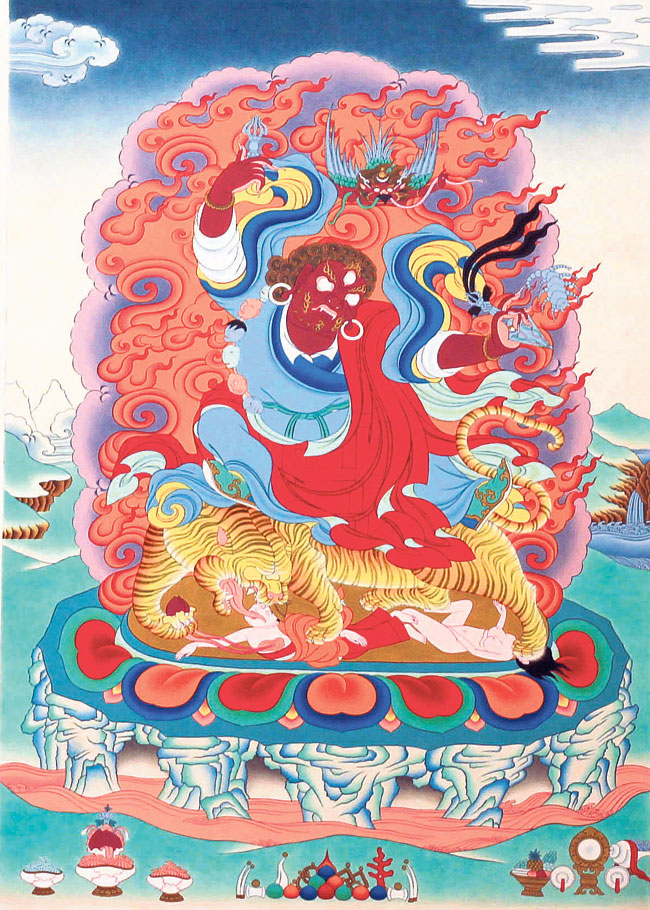Capturing Feelings in Art
5 years ago

5 years ago

5 years ago

5 years ago

5 years ago

5 years ago

Sacred Survival, an art exhibition that is to go on till May 21, featuring the works of 7 Thangka and Paubha artists at Siddhartha Art Gallery, Baber Mahal Revisited Courtyard Complex was inaugurated on Friday. Michael Gordon, the curator of the exhibition, is an American artist who has been in Nepal for nearly a year now on a Fulbright student grant studying and exploring his field of interest that are Thangka and Paubha.
Historically, these art pieces were not produced as expressions of creative human instincts, but rather as essential tools of worship. Today, however, it is not meant to serve religious purposes; it is no longer confined to a hereditary lineage. On the contrary, it proudly embodies an important dimension of contemporary ‘Nepali Art’: individual expression.
The exhibition is divided into two floors. Downstairs, the unfinished paintings reveal the process of Thangka and Paubha painting, acknowledging the daily craft of those who make them. Upstairs, the artists’ stories, collected and translated, ask those who come to pause, sit down, and listen to a reality too often overlooked via an audio-visual set-up equipped with multiple screens and headphones. The second segment of the exhibition is what really sets it apart from others that have displayed similar works or addressed similar themes.
Once a visitor puts on the headphones the person ceases to be a unit of the audience and, instead, morphs into a whole new identity entering a surreal set-up where in the visitor is permitted and, more importantly, welcome to walk into the personal lives of the seven artists to observe the intricate traditional process of birthing the art pieces.
This virtual interaction between the audience and the artisan eliminates the otherwise consistent existence of the ever-looming barrier between one that creates and one that consumes. It also reiterates the theme of the exhibition and Gordon’s central idea: to exhibit the tension between an art market fueled by mass consumption and the traditional practice striving to protect its heritage.
Sacred Survival examines the practices of seven contemporary Thangka and Paubha painters working and living in the Kathmandu Valley. The artists are Lok Chitrakar, Muna Moktan, Sonam Dolma, Tularam Lama, Bhim Thapa, Karma Rinchhen Gurung and Tenzin Norbu. These artists look deeply woven into the social fabric of their communities; it is hard to tell where the art stops and life begins.
For some, the craft is a way of maintaining cultural and spiritual lineage. For others redefining not only what is painted, but who gets to paint affirms the rapid democratization of the art form. For all of them, the paintings are a means of sacred survival, rewriting the terms of authenticity to reflect an ever changing present.
To offer a more holistic experience to the viewers Gordon provides several copies of a printed document that explains Paubha and Thangka as distinctive art forms, the works and struggles of the featured artists as well as the transcripts to their videos being showcased.
The exhibition has an ambience rich in warmth, intellect and curiosity courtesy of the helpful staff and the multi-cultural spectators. The quintessential interiors of the complex – dreamy benches surrounded by freshly bloomed flowers and in-house shops – coupled with the reassuring presence of Sangeeta Thapa, Director, Siddhartha Art Gallery, and Gordon himself, who answer any questions visitors may have, significantly add to the overall aesthetic quotient of the exhibition.
Leave A Comment